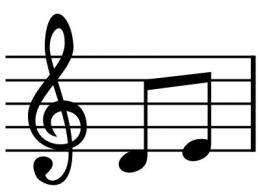Scientists reveal how two tracks of music become one

(Medical Xpress)—How does a DJ mix two songs to make the beat seem common to both tracks? A successful DJ makes the transition between tracks appear seamless while a bad mix is instantly noticeable and results in a 'galloping horses' effect that disrupts the dancing of the crowd. How accurate does beat mixing need to be to enhance, rather than disrupt perceived rhythm?
In a study published today (Wednesday 21 May 2014) in the journal Proceedings of the Royal Society B, scientists from the Universities of Birmingham and Cambridge present a new model that predicts whether or not two tracks will seem to share a common beat. This model also promises to help us understand how groups of people often start moving in synchrony, for example, football fans bouncing up and down at a stadium, or crowds falling into step when walking over a bridge.
'We found that the time window in which two beat lines are heard as one isn't fixed - it changes according to the statistical properties of each beat line, including how consistent or predictable they are,' said Dr Mark Elliott, lead researcher on the study from the University of Birmingham's School of Psychology. 'For example, with two very consistent beat lines we only allow a very small time difference between them before we consider them to be separate. By analogy, given that DJs tend to play songs with a strong bass beat, they need to be very accurate in aligning the beats of the two songs if they are to be heard as one so as not to disrupt the flow of dancing. Our model and experiments reveal the timing properties of separate beat lines that determine whether they will be heard as one or two.'
Dr Elliott and his colleagues tested their model using a laboratory task that involved people tapping their fingers in time with two similar beat lines played simultaneously, one defined by high pitched tones, the other low pitched tones. The concurrency of the lines was varied such that the high and low pitched tones were played close together in time or far apart. Furthermore, the separation between the high-low tones was either consistent or randomly varied across the experiment. The researchers determined when people change from tapping along to a single beat formed from the two tones or targeted one of the tones while ignoring the other. They found that the time separation between tones that was required for people to judge them as distinct beats varied according to the consistency of the timings between the tones. Subsequently, these judgments influenced the timing of their movements.
Dr Elliott added, 'People develop an expectation of when in time the next beat will occur. In defining the beat, they use the separation and consistency of the beat lines to determine whether the two tones should be combined together or whether just one tone should be attended to and the other ignored. Our model was able to predict the timing of participants' movements based on the timing statistics of the tones we presented. Therefore, it not only allows us to calculate whether two beats will be heard as one, but also means we can predict the subtle effects the perception of an underlying rhythm can have on the movements people make to keep in synchrony with more complex beats.'
Dr Elliott is currently involved in a study, in collaboration with the University of Leeds, investigating the timing accuracy of movements in professional DJs compared to classical musicians and non-musicians. In addition, the findings of the current research are being applied to other areas: 'We are currently investigating how spontaneous synchronisation of movements occurs within crowds. For example, in football stadiums the crowd sometimes starts to bounce up and down together. When the crowd moves together like this, it can create problems with structural vibration. Working with vibration engineers from the Universities of Sheffield and Exeter, we are applying our models to understand how such crowd dynamics might arise from the way each person adjusts their timing in relation to timing information from the people around them.'
More information: Moving in time: Bayesian causal inference explains movement coordination to auditory beats, rspb.royalsocietypublishing.or … .1098/rspb.2014.0751

















